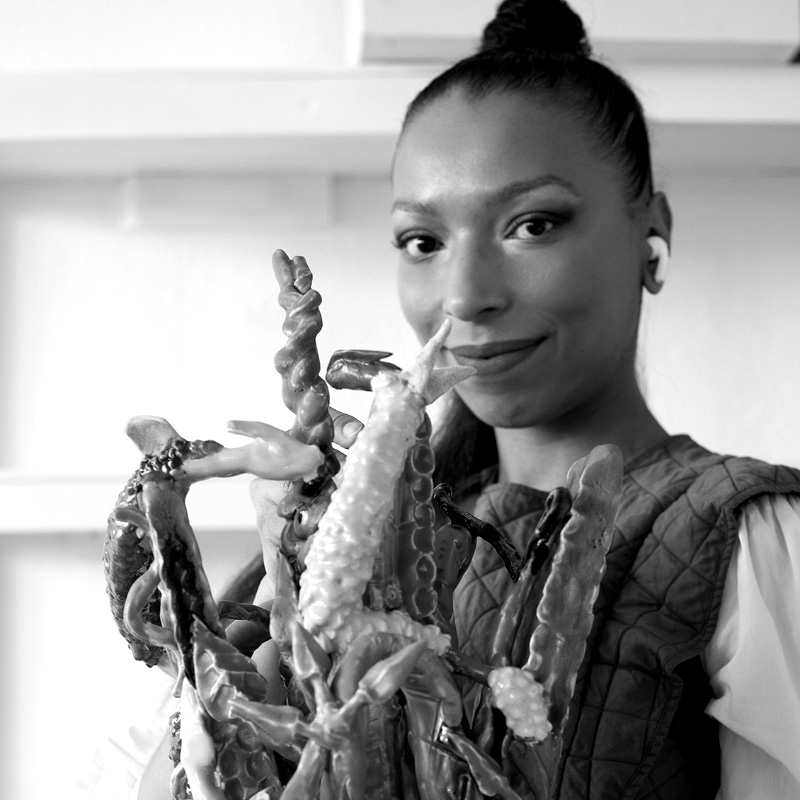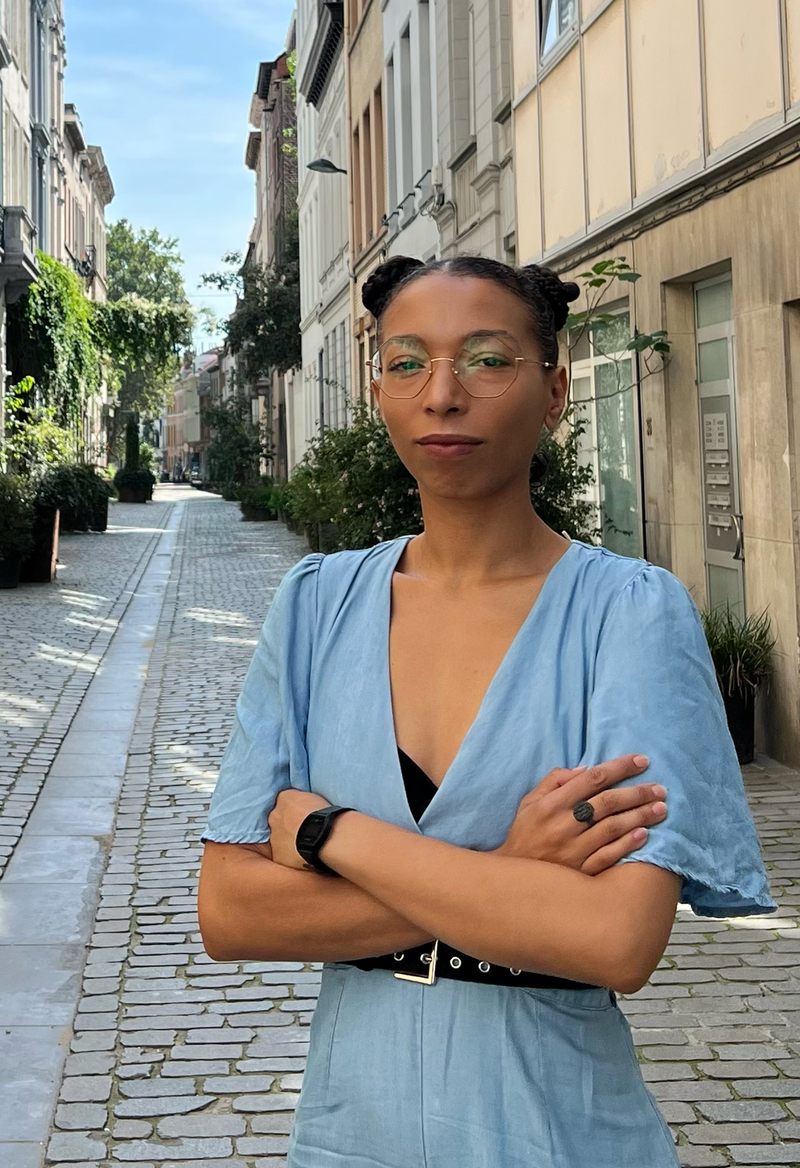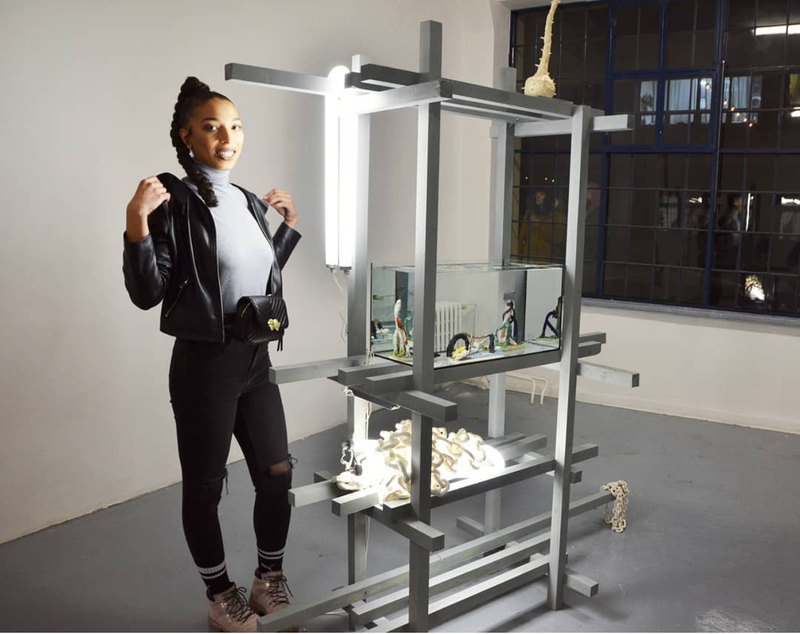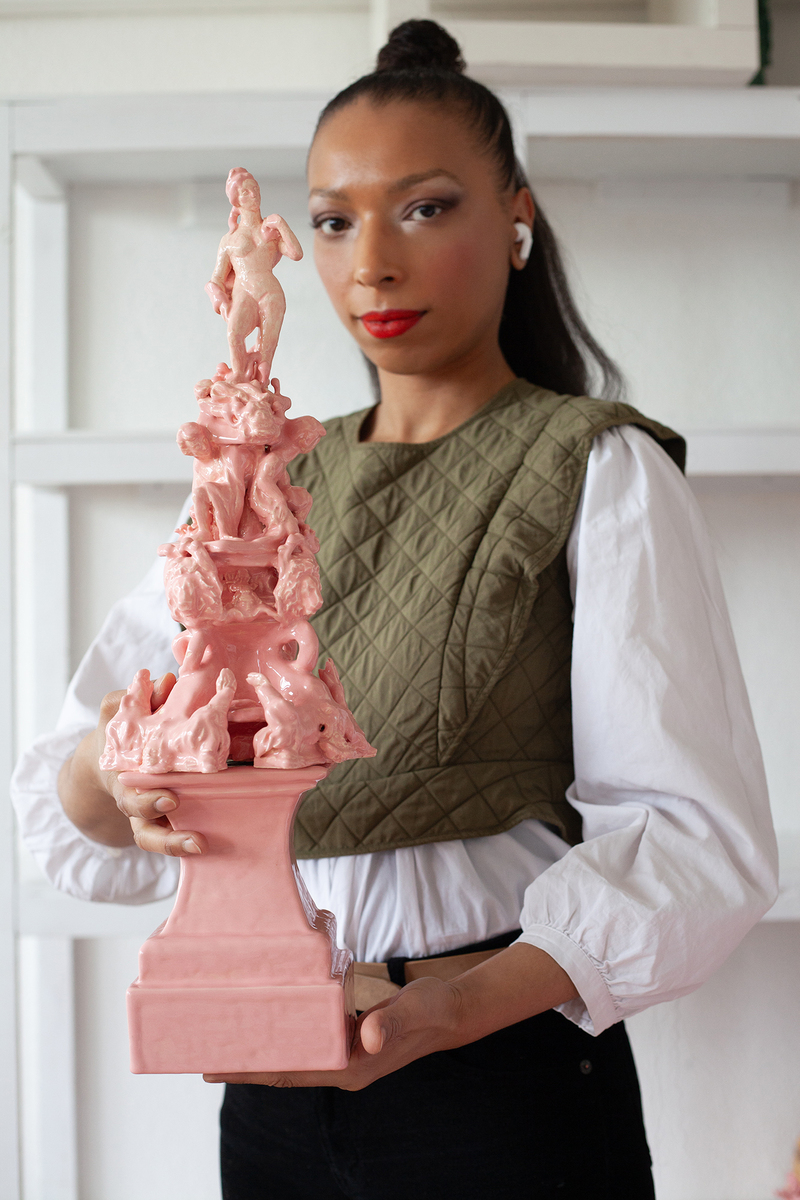Pavlíčková Ivana

* 07.11.1990 Hranice na Moravě, (CZ)
Education:
2025 HfBK Dresden, Meisterschule, Klasse Bildhauerei, DE
2014-2017 Technical University Brno, Faculty of fine arts, Sculpture 1, Prof. Michal Gabriel (MgA.)
2011-2014 University of Ostrava, Faculty of fine arts, Figurative Sculpture, Doc. Jaroslav Koléšek (BcA.)

Internships:
2022 Edinburgh sculpture workshop, UK
2016 Hochschule für Bildende Künste Dresden, Sculpture and Plastic, Prof. Martin Honert
Selected solo exhibitions:
2023 Damage decoding: Archaeology of the future, NoD, Prague (curated by Pavel Kubesa)
2022 Drip, Gold und Beton, Cologne
2020 Killjoy, Galerie Stephanie Kelly, Dresden
2019 Color blocking, Galerie Dole, Ostrava
2019 Beuys don’t cry, Pragovka gallery, Prague (curated by Veronika Zajačiková)
2018 CHOKER, Holešovická šachta, Prague
2017 Schicht, Industrial Gallery, Ostrava (curated by Lucie Pangrácová)
2017 New tab, Petrohradská Gallery, Prague (curated by Natálie Drtinová)
2017 No.6, Knot Gallery, Prague (curated by Viktor Čech)
2017 Forgiveness, fear and expectations, Monomach Gallery, Brno
Selected group exhibitions:
2023 The end / Not the end?, Goethe Institut, Paris (curated by Alex Grein)
2022 Like water, Top E.V, Berlin (curated by Jaana Heine)
2022 Leaving bubbles, Kunsthalle Regensburg (curated by Lina Schöbel)
2019 Vivid dream, Künstlerbund, Dresden
2019 Hearing economy, Galerie AMU, Prague (curated by Viktor Čech)
2018 Midas touch, The Regional Art Gallery Liberec (curated by Viktor Čech)
2017 Diplomanti FaVU, Dům Pánů z Kunštátu, Brno
2016 Sculptures in town, České Budějovice (curated by Prof. Michal Gabriel)
2015 Comeback of the May cinema, Cocoo - platform for presenting contemporary art, Ostrava
Stipend:
2020 Production Stipend of Ministry of culture Czech Republic

Artist's profile
"I draw from the recognition and understanding of matter. I align myself with the understanding of sculpture through Object-Oriented Ontology, but I am also intrigued by interpretation using modern psychoanalysis. My goal is to develop, through my work, a way of thinking that is not anthropocentric but rather speaks about humans. At the same time, I am interested in how and why we perceive things. The questioning (revision) of both social and visual conventions is an essential aspect of my endeavor for a sensitive and open approach to materiality.
Sculpture, as a representation of reality, should therefore be an object we constantly strive to understand, and thus, an open platform for further contemplation. I believe that objects can be considered for their ability to speak about each other, independent of human presence. These relationships need to be further assessed and explored.
For Young Real Art, I am presenting a series of ceramic sculptures and installations in which I work with the theme of coping with language and the naming of objects and situations around us. The revision of things we consider 'well-known' is a crucial step in recreating a worldview. I would like to assist in this role by focusing the sculpture on language itself and elaborating on this issue when addressing phenomena such as love, colonialism, or gender topics.
The subject of my project is systematic work with sculpture against the backdrop of constantly changing phenomena. I primarily work with ceramics, but I am open to other approaches and media such as photography, CGI, or performance.
I am also interested in the study of language and linguistics, and the possibility of viewing speech from different perspectives. I focus my attention on the very act of naming things, the teaching of language. In an effort to understand things anew and better, I have been learning English my entire life, and in recent years, intensively learning German as well.
I work with the aesthetic of amateur expression (so-called 'rap'). I select words or phrases pointing to certain phenomena and materialize them. The word 'Gift,' for instance, means 'Present' in English but 'Poison' in German. Language is a fertile tool for observation and cognition. The Rap style, however much it surrenders to or struggles with its own inadequacy or inexperience, is valued in graffiti precisely for its immediacy.
I am looking for a way to approach the issue of colonization in art that makes it possible to avoid endless blaming of those involved. I believe that addressing identity questions is important. In this case, however, I would propose affirming one's presence and permanently shedding the burdens of oppression, both inherited and 'real-time.' I am searching for a way to demonstrate these standpoints in sculpture.
I would like to create a safe space for contemplation within the given conditions. My practice involves concentrated studio creation, the making of objects, and the selection of the strongest ones for subsequent presentation to the viewer." Ivana Pavlíčková


